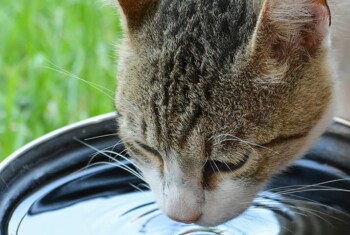Humerus bone fracture: Causes and treatment.
The humerus connects with other bones to form the elbow and the shoulder joints. The radial nerve is critical for normal function of the forelimb and wraps around the outer side of the humerus bone above the elbow joint.
Causes.
Because the humerus is well protected by thick surrounding muscles, a fracture of this bone requires substantial trauma, such as being hit by a car. Gunshot injuries not only will fracture the bone, but also will result in a dirty open wound. This could potentially result in infection and delayed healing of the bone.
Also, if the fractured bone is sharp it may penetrate through the skin and result in infection of the bone. If the pet sustains a fracture without any known trauma, there may be an underlying disease that has weakened the bone such as nutritional deficiencies.
Foods that have too much phosphorus and too little calcium or too much vitamin A will make the bones weak. Some animals have an inherited collagen defect that weakens the bones, resulting in bone fractures with minimal trauma.
Bone cancer can also weaken the bone and predispose the pet to a spontaneous fracture.
Surgery.
For most fractures of the humerus, a bone plate and a series of screws are used to stabilize the fracture. This treatment results in the least aftercare for the client and has an excellent chance of a successful outcome.
If the fracture is caused by a gunshot or other trauma that results in an open wound over the fracture site, an external fixator may be the treatment of choice. Also, if the bone is fractured in multiple small pieces the best treatment may be an external skeletal fixator. This apparatus consists of multiple pins that penetrate the skin and bone and are connected to external bars that run parallel to the bone.
An older technique to repair a humeral fracture involves placing a single pin into the marrow cavity of the bone and using wires that are wrapped around the bone. This method of repair is only used in certain types of humeral fractures. The use of a cast as the sole treatment for humeral fractures commonly results in a non-healing fracture or malalignment of the bone (bent bone).
Results.
Surgical repair of a fractured humerus bone with a plate and screws or external skeletal fixator offers multiple benefits including a faster recovery, earlier use of the limb after surgery, better chance to return to athletic activity, less risk of a second surgery being required, and better range of motion of the joints above and below the fracture.
Uncommon complications include infection, non-healing of the fractures, breakage of the metal plate, osteoporosis of the bone, bone cancer induced by metal implants, cold sensitivity and re-fracture.


